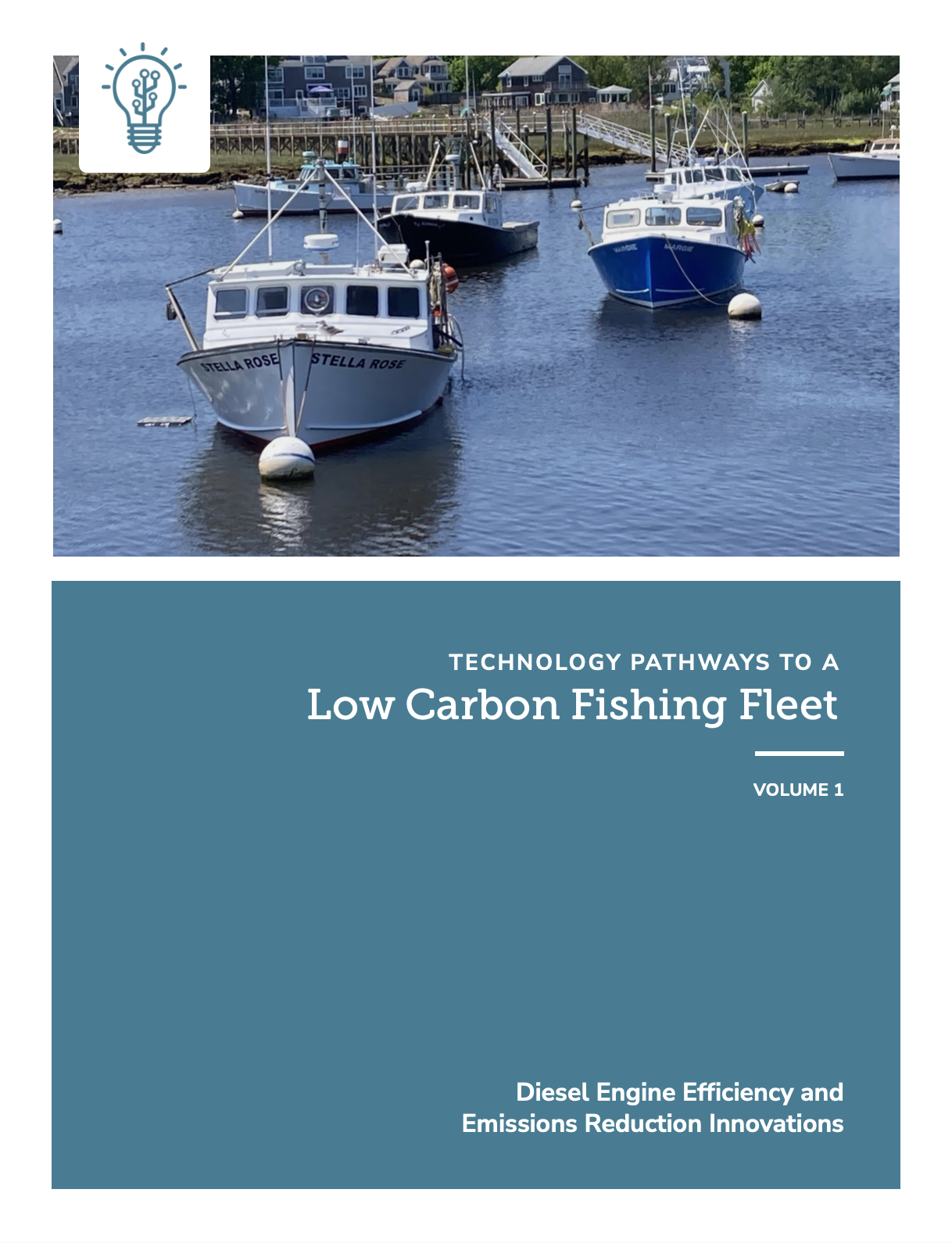Volume 1: Diesel Engine Efficiency and Emissions Reduction Innovations
Abstract
This report, part of the Technology Pathways to a Low Carbon Fishing Fleet series, explores the experiences and perspectives of commercial fishermen related to advancements in diesel engine technology. These advancements have been driven in recent decades by EPA regulations designed to improve local air quality, a goal that is distinct from reducing fuel consumption and greenhouse gas emissions. Interviews with 148 fishing businesses across Alaska, the West Coast, and New England reveal three main attitudes towards diesel engine innovation in the commercial fishing industry:
Preference for diesel efficiency over other low-carbon pathways: Some fishermen express skepticism about completely eliminating diesel fuel from the fleet, favoring high-efficiency diesel engines that reduce the quantity of fuel consumed instead of transitioning to zero-emission alternatives in the years ahead.
Divergent views on engine efficiency: There is a split among fishermen regarding the fuel efficiency of newer, computer-controlled engines developed in response to EPA air quality regulations. While some believe these modern engines are more efficient, others dispute a consistent link between EPA engine tier and fuel efficiency, with some even alleging tradeoffs between reduced air quality emissions and fuel efficiency for some engine tiers.
Emphasis on dependability over efficiency: While fishermen value fuel efficiency, most are far more concerned with engine reliability, safety-at-sea, ease of do-it-yourself repair, local availability of qualified technicians, and accessibility of replacement parts. Because fishermen perceive these qualities as harder to find in newer engines, many opt to regularly rebuild their older engines instead of replacing them with higher-tier engines, despite government incentives to defray the costs of tier upgrades.

